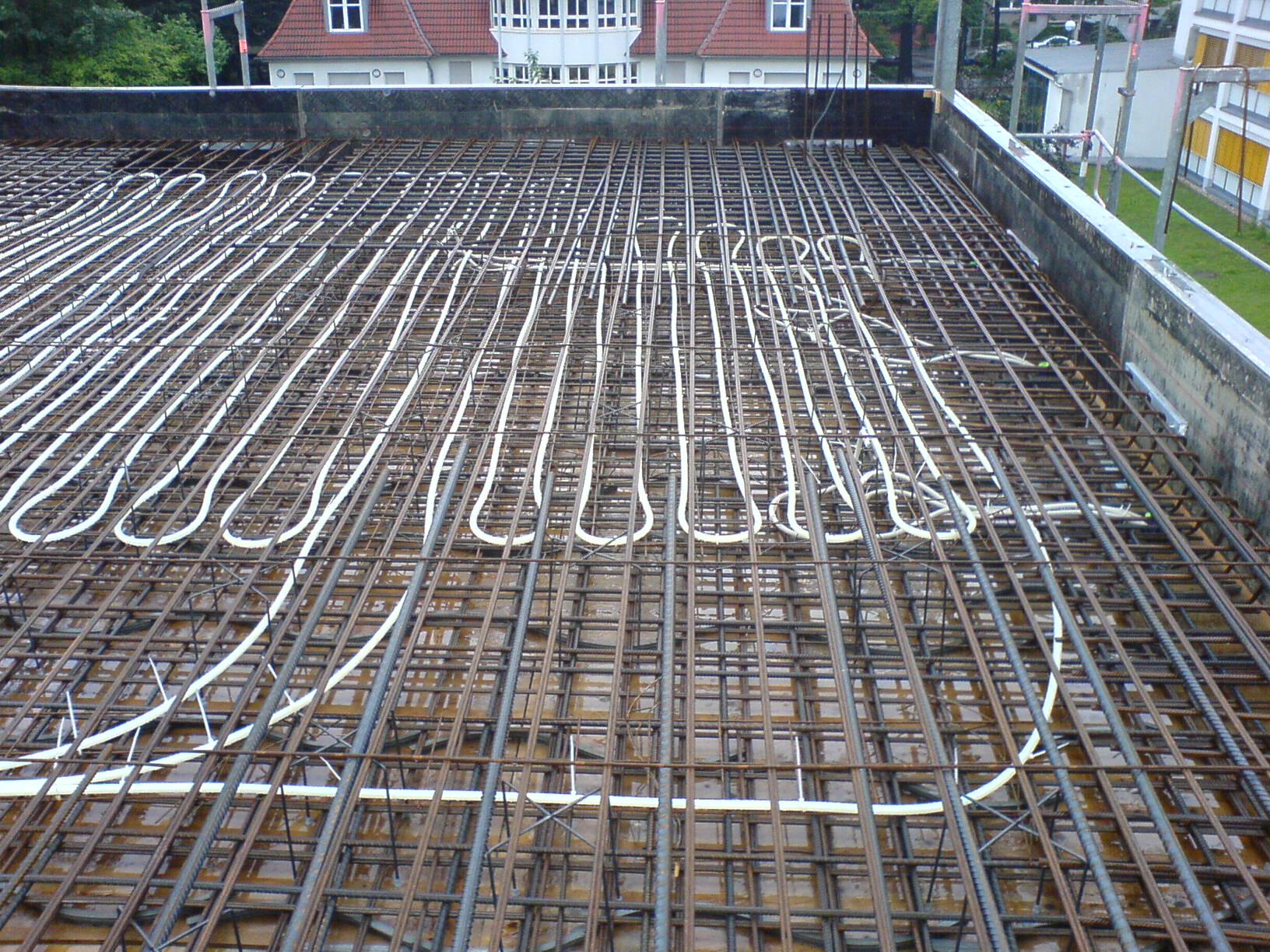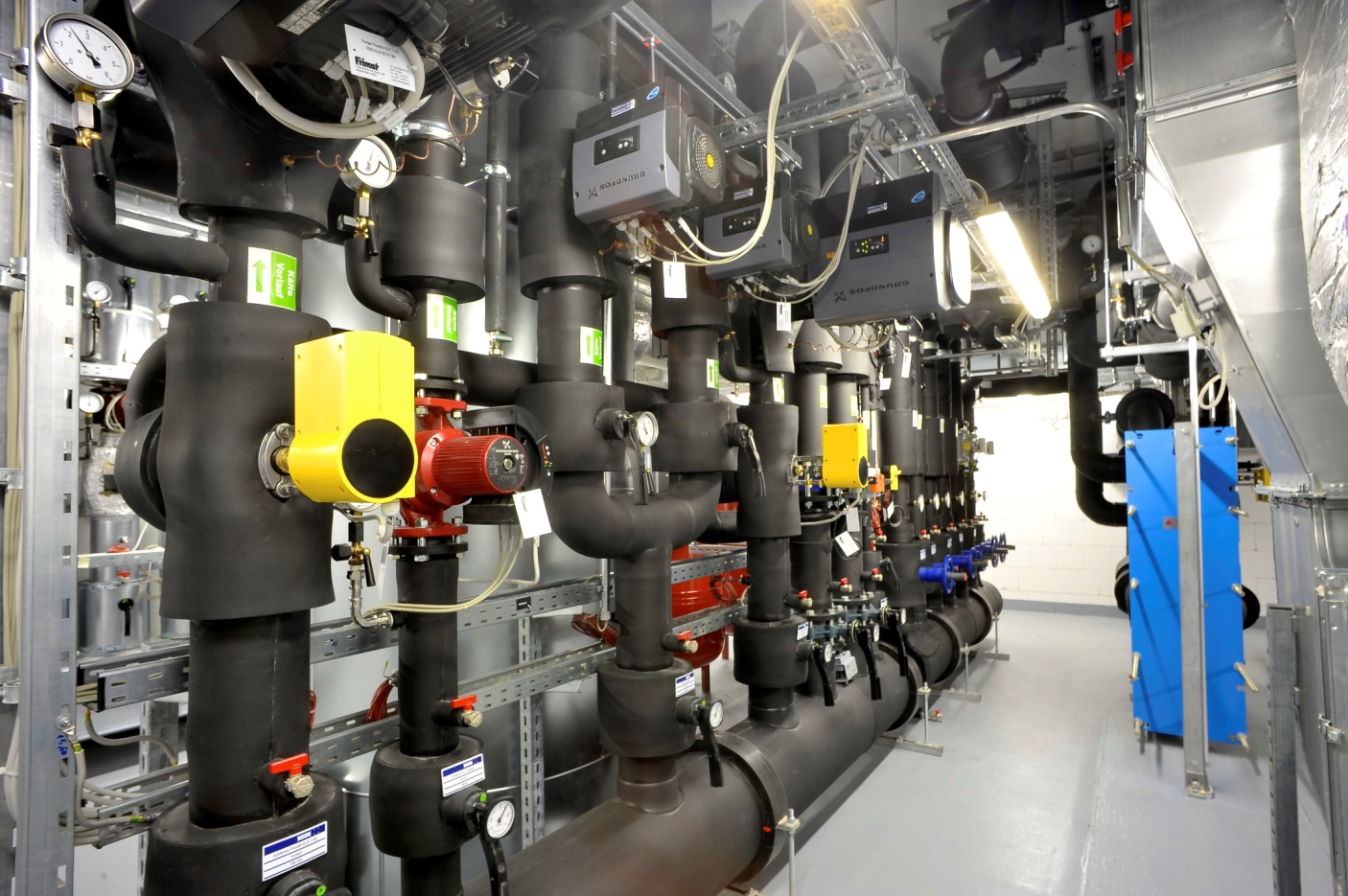| Duration: | May 2014 - October 2016 |
| Contracting Authority/ Sponsors: |
Federal Ministry for Economic Affairs and Energy (BMWi) |
| Project Partners: | Fachverband Gebäude-Klima e.V., Bietigheim-Bissingen, WILO SE, Dortmund, Oventrop GmbH & Co. KG, Olsberg |
| Project Focus: |
LowEx: Quality Assurance (LowEx-QS) – Quality Assurance for Planning and Implementation of Hydraulic Concepts in Low Exergy Heating and Cooling Systems


The project addresses the analysis, evaluation, and optimization of hydraulic systems used in LowEx heating and cooling systems in buildings. The goal of the project is to establish characteristics and target values for the design and energetic evaluation of hydraulic systems for cooling and heating distribution systems in non-residential buildings, paying particular attention to LowEx system requirements. The analyses are used to develop suitable, simplified methods for the energetic evaluation within the scope of ENEV and DIN V 18599.
Due to the constantly decreasing demand for and consumption of primary energy for technical building services in low and zero-energy buildings, greater importance must be given to using auxiliary energy for the hydraulics of water-driven systems. LowEx systems used for heating and cooling systems are characterized by their ability to achieve thermal heat transfer with low temperature differences. This offers advantages when it comes to supplying environmental heat soures and sinks, such as ambient air, shallow geothermal energy, and ground water, which can be used directly or increased/decreased to the desired temperature in a very energy-efficient way. Due to low temperature differences between the heat sources (e.g. borehole heat exchangers) and the distribution and transfer systems (e.g. slab heating and cooling), the electric pump energy used for thermal transfer in LowEx systems is particularly important. Ongoing and completed research projects show that repeated mistakes have been and will continue to be made when dimensioning and operating hydraulic systems.
For this reason, the present research project analyzes the primary (ambient heat sources and sinks) and secondary hydraulic circuits (e.g. slab heating and cooling systems) of existing systems. These systems are tested for typical weak points in the design and dimensioning of hydraulic heating and cooling distribution systems. Based on these tests, it is then possible to identify ways of optimizing the systems to make them more energy efficient.
The auxiliary energy input (pump current draw) can often be reduced significantly via measures in operation and control. This concerns the reduction of the partial load behavior, power balancing between the individual consumers, and avoiding minor temperature spreading. Operating time reduction to the greatest extend possible must be ensured. If needed, intermittent pump operation and/or volume flow control depending on the temperature difference between feed and return (between 3 and 5 Kelvin) can be implemented.
Because of the findings, planning guides can then be made available to specialists, providing them with recommendations and guidelines for designing and dimensioning hydraulic systems using LowEx concepts.